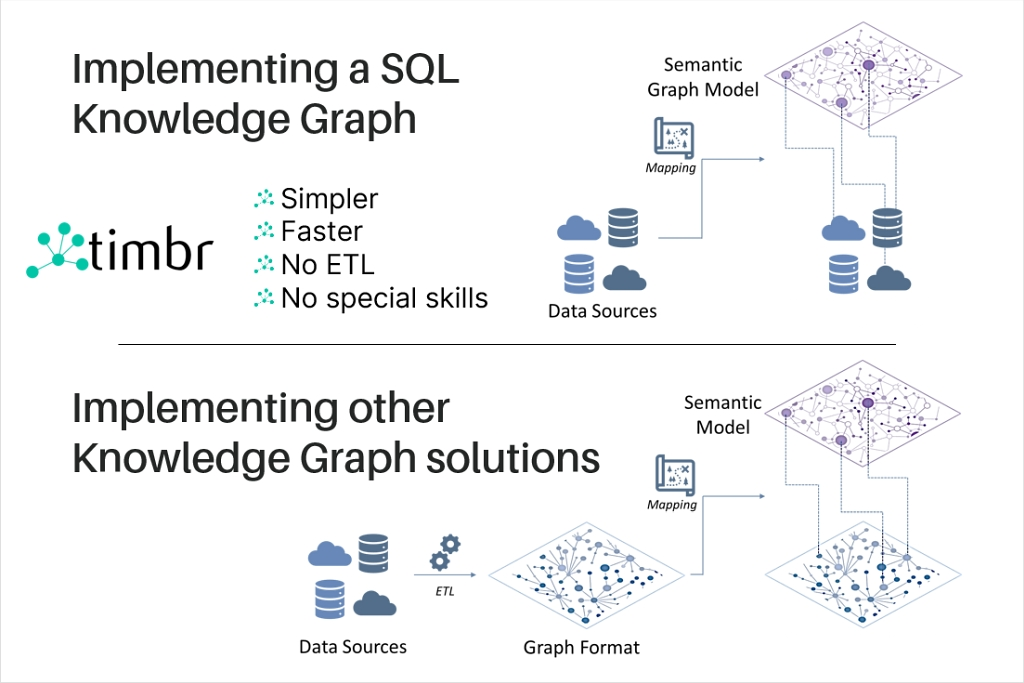
The Timbr knowledge graph can be implemented in just a few steps and does not require special skills or elaborated architectural constructs.
The goal when creating Timbr was to democratize implementation of knowledge graphs so any organization could benefit from the rich features and value they provide. Since a majority of data consumers are familiar with the SQL ecosystem, Timbr is designed as a virtual layer that sits on top of the existing database infrastructure and makes use of the organization’s available skill sets.
So, implementing Timbr entails three simple steps:
- Connecting the data sources.
- Creating the semantic business model either visually, manually with DDL statements or automatically by importing an industry data model.
- Mapping the data to the concepts of the semantic business model.
In contrast, legacy knowledge graph solutions require:
- Setting up a graph database.
- Transforming the organizational data into graph format by performing costly and time-consuming ETL operations.
- Modeling the semantic graph layer that requires special skills, including knowledge of OWL or SHACL.
- Mapping the graph database data to the semantic graph model.
- Recreating the whole graph model when new data is added.
The implementation of these knowledge graph solutions require heavy involvement by specialized personnel and this usually becomes a lengthy, expensive project that delays time to value.
Contact us today to implement your semantic knowledge graph and transform your databases into a single connected semantic graph queryable in SQL.
How do you make your data smart?
timbr virtually transforms existing databases into semantic SQL knowledge graphs with inference and graph capabilities, so data consumers can deliver fast answers and unique insights with minimum effort.
Register to get free access
The information you provide will be used in accordance with the terms of our privacy policy.


